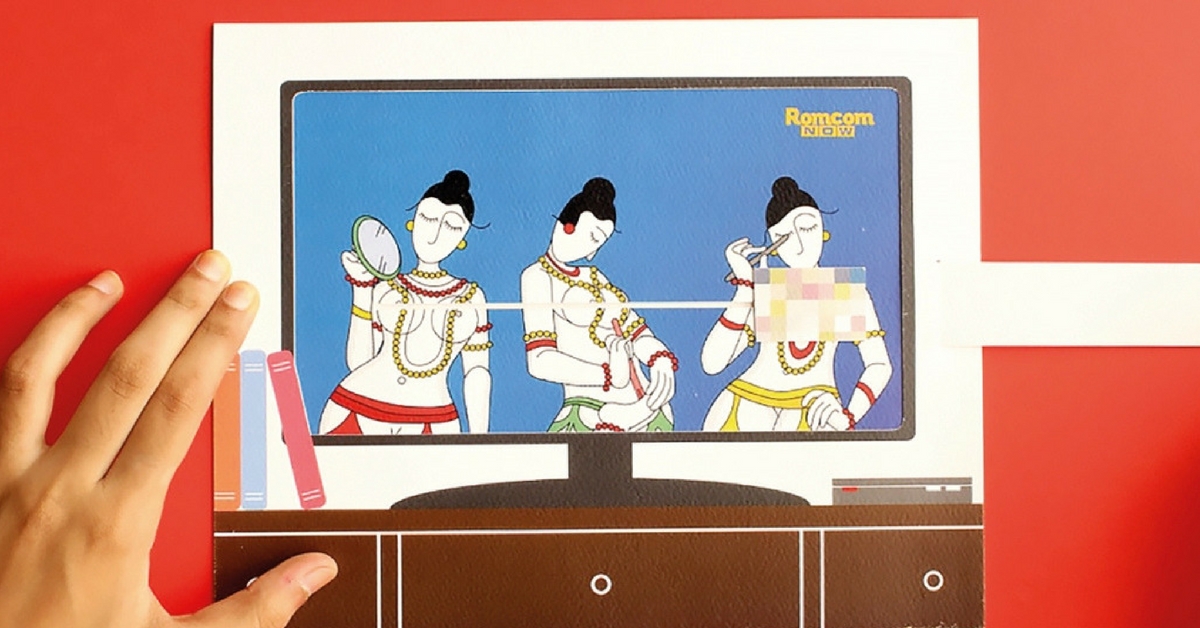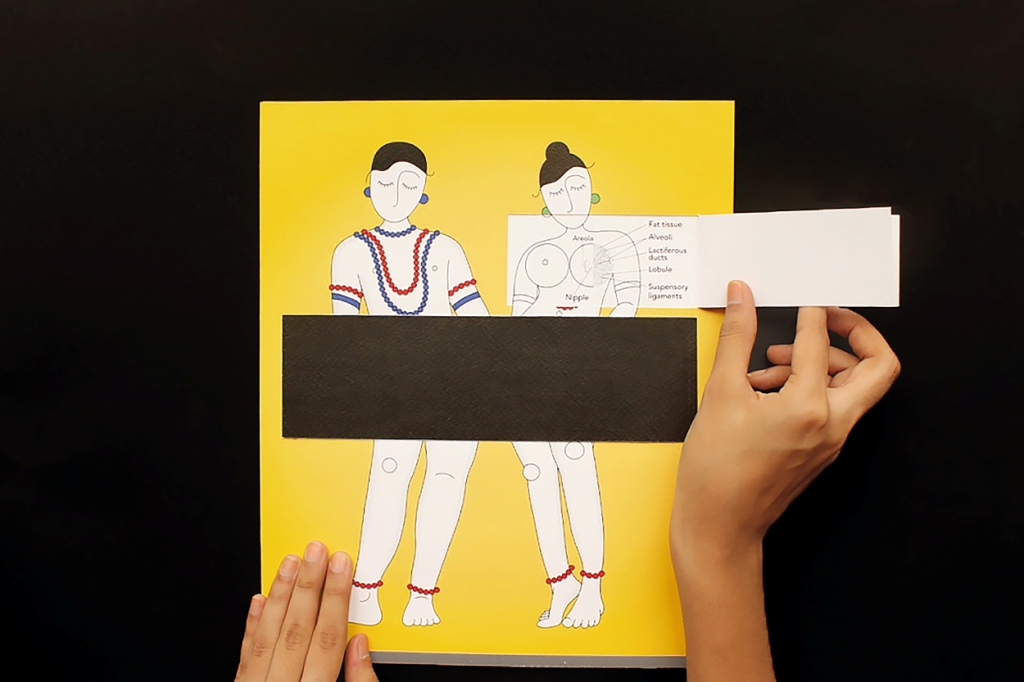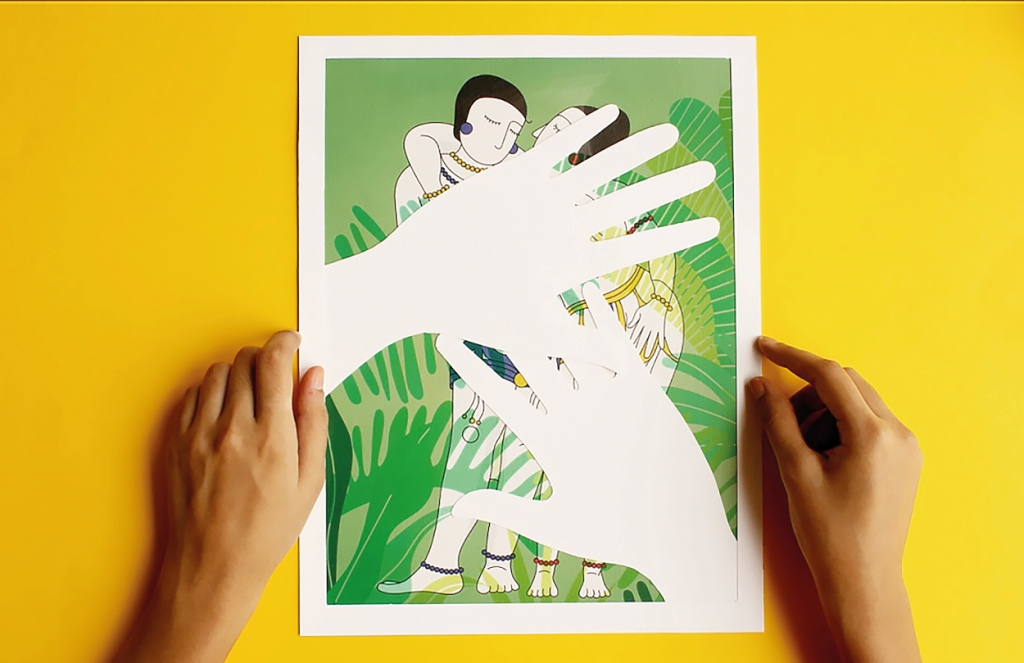Meet the 22-Year-Old Artist Whose Project on Censorship & Sexuality Has Fans Like Shashi Tharoor
Being Censitive (a pun on the words ‘censor’ and ‘sensitive’) by Akshita Chandra began as a student project and slowly evolved into something entirely different.

In a country like ours, it’s much needed that we spark conversations about uncomfortable issues – taboos like gender, sexuality, caste.It is crucial that these become dinner-table discussions. Last year, 22-year-old artist Akshita Chandra decided to take matters into her own hands and give censorship on the grounds of obscenity a whole new context. Her solution?
Her art project titled Being Censitive (a pun on the words ‘censor’ and ‘sensitive’) that began as a student project at Srishti Institute of Art, Design and Technology, Bangalore, slowly evolved into something entirely different.

Says Akshita, “Censorship and moral policing had been on my mind for a long time. I come from a small town, so it was a common occurrence. The trigger that led me to take this project up was the incident that happened in Mumbai in August 2015, where some 40 odd couples were taken out of private hotel rooms and booked for public indecency. I remember being quite aghast at the time.”
She found herself wondering what the standard of obscenity was and why it operated on sentiments of hurt based on a “shared sense of Indianness”.
The project was almost self-therapeutic. I was trying to make sense of why it happens but I couldn’t, and it eventually became satire. When you don’t have much, you still have your humour.”
Having been to an all-girl’s convent, sex education had never been a part of the curriculum. She recalls that there was one chapter in the biology book in class 10 about the reproductive system, which was only roughly touched upon. “I remember asking my father, who is a doctor, to explain to me the difficult parts of the chapter,” she says.
In her own attempt at understanding this seemingly grey area, the artist drew inspiration from Khajuraho’s erotic temple art, using GIFs and paper craft, as found in pop-up books, and juxtaposing the imagery with examples of censorship from the news.

The research in itself was quite intensive. “I got lost in it! When I became sure that my project would be on censorship and moral policing, I started making lists of such incidents. To tie it back to the past, I started making a list of all the things in our cultural history that I could possibly use: poems, miniature paintings, temples, Kama Sutra, paintings by Raja Ravi Varma, history of Kamadev, etc. My data was all over the place. Somewhere down the line, I realised that I needed to narrow down the content to make sense of it all and to make my project crisper,” she says.
This led her to narrowing down the material to temples, with 17-odd temples built between the 7th to 17th century with erotic sculptures adorning the walls. She found the idea of using a temple to present obscenity interesting because in India, people treat temples as pious places and associate sex with guilt and irreligiousness.
You might also like: 5 Women Illustrators From India Who Use the Power of Art to Shatter Taboos and Change Mindsets
The idea of using something from the past to see how it would fit in the contemporary Indian society was also a driving force. She explains, “I narrowed it down to the Khajuraho temple simply because I had been there a number of times and was aware of its history quite well. It’s also the most famous in terms of erotic sculptures.”
The Tantric sect of Hinduism followed by the rulers of Chandela dynasty – who were responsible for building these temples – believed that sexual unions are a metaphor for weaving together of the physical to the divine.” .
Seeing the project as her commentary on the times, Akshita used art to create a dialogue between the past and the present. “Each artwork explored the idea of including censorship in my favour to make unconventional artworks that play with the line of what is deemed obscene and what is acceptable. Each form manifested the play of concealing and revealing, making them layered and dynamic. They referred to a few incidents of censorship/moral policing (present), taking temple art of Khajuraho as my representative case for the past,” she notes.
To effectively convey this point, she used interactive artworks where the viewer participated in the narrative to reveal what was underneath each piece.

“The idea was to help ‘un-censor’ what’s underneath and resolve to some understanding of censorship that is left open-ended for them to form,” she notes.
Asked what kind of feedback she received from everyday people on showing them the project, Akshita shares that while it was extremely well-received by her peers and world at large, she was relieved that her family supported her in a big way.
“Censorship/moral policing is a battle that involves itself with politics, culture and even religion. These terms are so vast and complicated, they often gets convoluted. Behance flagged my project for having ‘objectionable content’, which is why I put it on my Tumblr. I couldn’t help but laugh at the irony!”
Her project was also shared by Shashi Tharoor, which made her ecstatic. “It was extremely gratifying also because I followed a lot of his speeches and articles where he talks about moral policing and/or censorship. A lot of my data came from what he had already said,” she grins.
You might also like: Transgender Women Around India Are Discovering the Joy of Art With Help From a Bengaluru Muralist
A project like this obviously impacts the artist on a personal level too. Did working on the project change her perspective and approach to the way she lives and reacts to issues? “Definitely. I react to moral policing around me a lot more, almost like I owe it to myself and the work I did. I notice it more and feel all the more disturbed by it because it continues to happen. I’m baffled by the reasons people give for why moral policing is necessary. These very reasons led me to start my next project ‘Grimm Reality’,” she informs.
Akshita’s upcoming project Grimm Reality explores how “good-natured” fairy tales such as Cinderella and Snow White show restrictive moral rules for girls. “The research and production has been complete for almost a year now. I’m finally getting ready to put it out. I recently read We should all be Feminists by Chimamanda Adichie and it gave me the necessary push. I’ve documented it and almost all the files have been edited. I’m actually submitting a paper at the moment on gender equality using the project as my premise. The project should be out soon!”
Like this story? Or have something to share? Write to us: [email protected], or connect with us on Facebook and Twitter.
NEW: Click here to get positive news on WhatsApp!
This story made me
- 97
- 121
- 89
- 167
Tell Us More
We bring stories straight from the heart of India, to inspire millions and create a wave of impact. Our positive movement is growing bigger everyday, and we would love for you to join it.
Please contribute whatever you can, every little penny helps our team in bringing you more stories that support dreams and spread hope.



















